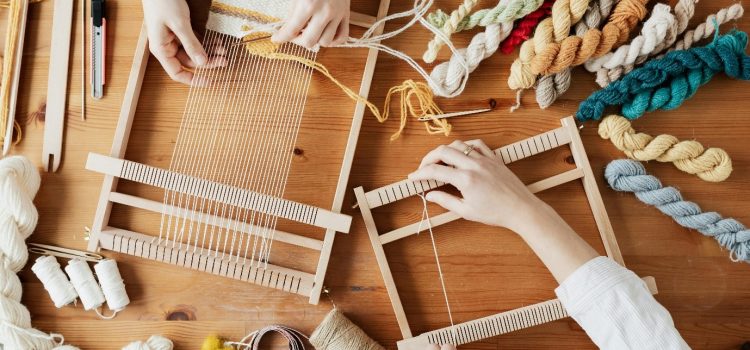
DIY Home Improvement Products What’s New in 2024
In recent years, there has been a significant resurgence in the DIY (Do-It-Yourself) culture. This revival is marked by an increased interest in crafting materials and the diverse projects they facilitate. From knitting and crochet to woodworking and pottery, individuals of all ages are rediscovering the joy and satisfaction of creating something with their own hands. This article explores the reasons behind this renewed interest, the types of crafting materials that have gained popularity, and the impact of this trend on the market.

The Rise of DIY Culture
Historical Context
The DIY movement isn’t new; it has its roots in the early 20th century, gaining substantial momentum during the 1960s and 1970s. During these decades, people sought more control over the production of goods, driven by a combination of economic necessity and a desire for personalization. However, the late 20th and early 21st centuries saw a decline in DIY activities as mass production and consumer culture took over.
Modern Resurgence
The 21st century has witnessed a remarkable comeback of DIY culture. Several factors contribute to this revival, including the rise of social media platforms, economic shifts, and a growing awareness of sustainability. Websites like Pinterest, Instagram, and YouTube have made it easier for people to share their projects, gain inspiration, and learn new skills.
Popular Crafting Materials
Textiles and Fabrics
Knitting, crochet, and sewing have seen a significant boost in popularity. High-quality yarns, unique fabric patterns, and sustainable textiles are in high demand. Craft enthusiasts are drawn to the variety of materials available, from organic cotton and wool to synthetic blends.
Paper and Cardstock
Paper crafting, including scrapbooking and card making, has also experienced a revival. Specialty papers, embossing tools, and cutting machines are popular among crafters who enjoy creating personalized gifts and decorations.
Wood and Metal
Woodworking and metalworking have traditionally been male-dominated fields, but this is changing. More people, including women, are taking up these crafts, driven by the desire to create custom furniture, jewelry, and home decor. The availability of affordable tools and materials has made these crafts more accessible.
Clay and Pottery
Pottery and ceramics are enjoying renewed interest, thanks in part to the therapeutic benefits associated with working with clay. Potters’ wheels, kilns, and various types of clay are sought after by both beginners and experienced crafters.
Recycled and Upcycled Materials
In line with the sustainability movement, many crafters are turning to recycled and upcycled materials. This trend not only reduces waste but also allows for creative and unique projects. Items such as glass bottles, old furniture, and fabric scraps are transformed into new, functional pieces.
Market Impact
Economic Influence
The resurgence of DIY culture has a significant economic impact. Craft stores and online retailers have seen increased sales of crafting materials and tools. This growth has led to the emergence of small businesses and independent artisans who sell handmade goods and supplies.
Social and Community Effects
DIY culture fosters a sense of community and social interaction. Crafting groups, workshops, and fairs provide opportunities for individuals to connect, share skills, and support each other. This sense of community is particularly important in an age where digital interactions often replace face-to-face communication.
Environmental Considerations
The trend towards using sustainable and recycled materials has positive environmental implications. By repurposing items and reducing waste, crafters contribute to environmental conservation efforts. This aspect of DIY culture aligns with the broader movement towards sustainability and eco-friendliness.
Analysis Table
| Category | Popular Materials | Reasons for Popularity | Impact on Market |
| Textiles and Fabrics | Organic cotton, wool, synthetic blends | Variety, quality, sustainability | Increased sales in yarns and fabrics |
| Paper and Cardstock | Specialty papers, embossing tools | Personalization, creativity | Growth in scrapbooking and card making supplies |
| Wood and Metal | Various woods, metals | Accessibility, custom creations | Rise in woodworking and metalworking tools |
| Clay and Pottery | Different clays, pottery tools | Therapeutic benefits, uniqueness | Boost in pottery equipment and supplies |
| Recycled Materials | Glass bottles, fabric scraps | Sustainability, creativity | Expansion of recycled craft supplies |
Comparative Table
| Aspect | Past DIY Culture | Modern DIY Culture |
| Primary Drivers | Economic necessity, personalization | Social media, sustainability, economy |
| Popular Crafts | Sewing, woodworking, knitting | Knitting, paper crafting, pottery |
| Accessibility | Limited to local resources | Global online resources |
| Community Engagement | Local groups, workshops | Online communities, social media |
| Environmental Impact | Not a primary focus | Significant focus on sustainability |
Conclusion
The revival of DIY culture highlights a profound shift in how people value and interact with crafting materials. This movement emphasizes the importance of creativity, sustainability, and community. As more individuals embrace DIY projects, the market for crafting materials will continue to grow and evolve, reflecting broader societal trends towards personalization and environmental consciousness.









